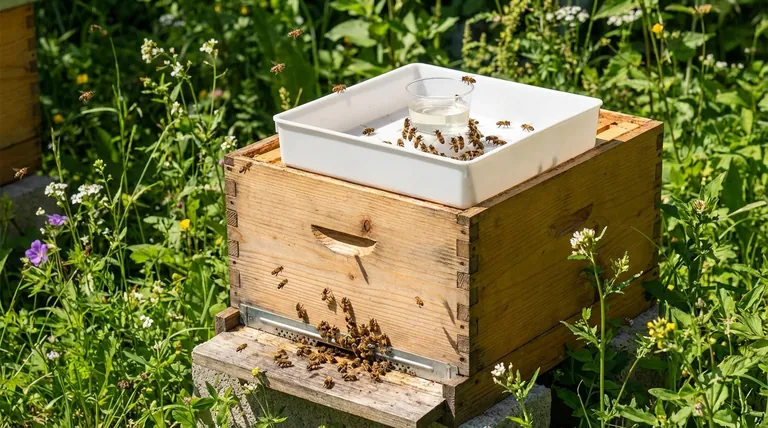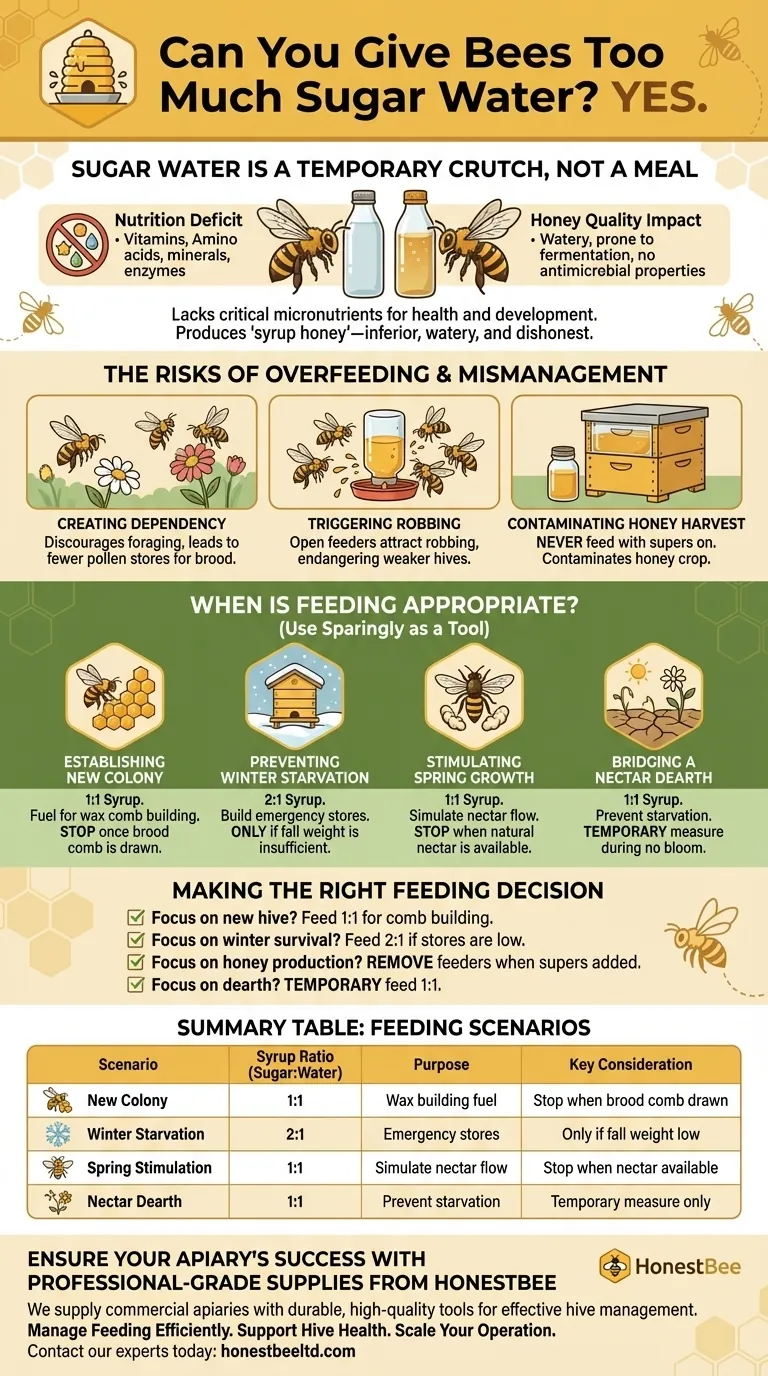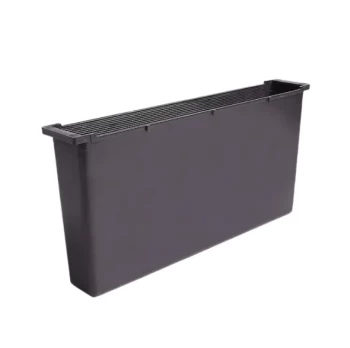Yes, you can absolutely give bees too much sugar water. While intended as a supportive measure, indiscriminate or excessive feeding can have significant negative consequences on bee health, hive behavior, and the quality of the honey they produce. It is a tool for intervention, not a replacement for their natural diet of nectar and pollen.
The central principle of supplemental feeding is that sugar water is a temporary crutch, not a permanent meal. It should only be used to solve specific problems, such as preventing starvation or helping a new colony establish itself, because its long-term use undermines the nutritional health of the hive and the integrity of its honey.

Why Sugar Water is a Crutch, Not a Meal
Understanding the limitations of sugar syrup is the first step to using it responsibly. It provides energy, but it is a nutritionally incomplete food source that can create long-term problems.
The Nutritional Deficit
Natural nectar is more than just sugar. It contains a complex blend of amino acids, vitamins, minerals, and enzymes that are essential for bee health, immune function, and larval development.
Sugar syrup, typically a mix of refined white sugar and water, provides only carbohydrates (sucrose). It lacks the critical micronutrients bees need to thrive, making it the equivalent of a human living on soda and candy.
Impact on Honey Quality
When bees collect sugar syrup, they process and store it just as they would nectar. The resulting product, however, is not true honey. It lacks the complex flavor profile, aromatic compounds, and beneficial enzymes derived from flowers.
This "syrup honey" is often watery, prone to fermentation, and does not possess the natural antimicrobial properties of real honey. If harvested, it results in a vastly inferior and dishonest product.
Creating Dependency
Constant, easy access to a feeder can discourage bees from foraging, even when natural nectar sources are available. This learned dependency makes the colony less resilient and less adapted to its local environment.
A hive that doesn't actively forage also fails to gather pollen, the bees' only source of protein and fats, which is crucial for raising new brood. This can lead to a decline in colony population and strength.
When Is Feeding Sugar Water Appropriate?
Despite the risks, feeding is a critical management tool when used correctly and sparingly. There are specific scenarios where the benefit of immediate energy outweighs the long-term nutritional drawbacks.
Establishing a New Colony
A newly installed package or nucleus colony ("nuc") has a monumental task: building wax comb. Producing wax is incredibly energy-intensive, and providing a 1:1 sugar-to-water syrup gives them the fuel needed to rapidly build their home and begin raising brood.
Preventing Winter Starvation
In late fall, if a hive has insufficient honey stores to survive the winter, feeding a heavy 2:1 syrup (two parts sugar to one part water) is a necessary survival measure. This is a direct intervention to prevent the colony from starving.
Stimulating Spring Growth
In early spring, before natural nectar is widely available, feeding a light 1:1 syrup can simulate a nectar flow. This encourages the queen to begin laying eggs, helping the colony build its population in time for the main honey flow.
Responding to a Dearth
A nectar dearth is a period when no flowers are blooming, often in the heat of mid-summer. If a colony is light on stores, a temporary feeding can bridge the gap until natural forage returns.
Understanding the Trade-offs and Risks
Responsible feeding means being aware of the potential for unintended harm. Mismanagement can create more problems than it solves.
Triggering Robbing Behavior
An open or leaky feeder can attract bees from neighboring hives. This can incite "robbing," where stronger colonies attack a weaker one to steal its resources. A robbing frenzy can quickly decimate or destroy a hive.
Contaminating the Honey Harvest
This is the cardinal rule of feeding: never feed sugar syrup when honey supers are on the hive. Honey supers are the boxes meant for surplus honey that you intend to harvest. Any syrup collected during this time will be stored in the comb, contaminating your honey crop.
Introducing Excess Moisture
Bees must dehydrate nectar (or syrup) to turn it into honey. If you feed large amounts of thin syrup, especially in cool or humid weather, the bees may struggle to dehydrate it. This excess moisture can raise the hive's humidity, promoting mold and the fermentation of stored food.
Making the Right Feeding Decision
Your decision to feed should always be a direct response to a specific condition in the hive, not a routine action.
- If your primary focus is establishing a new hive: Feed a 1:1 syrup until the bees have built out the comb in their primary brood box.
- If your primary focus is winter survival: Check hive weight in the fall and feed a 2:1 syrup only if stores are insufficient to last until spring.
- If your primary focus is honey production: Remove all feeders as soon as you add honey supers to the hive.
- If your primary focus is supporting a hive during a dearth: Temporarily feed a 1:1 syrup and stop as soon as natural nectar becomes available.
By treating sugar syrup as a precise tool rather than a substitute for nature, you become a responsible steward for your colony's long-term health and success.
Summary Table:
| Feeding Scenario | Recommended Syrup Ratio | Purpose | Key Consideration |
|---|---|---|---|
| New Colony Establishment | 1:1 (Sugar:Water) | Fuel for wax comb building | Stop once brood comb is drawn out |
| Preventing Winter Starvation | 2:1 (Sugar:Water) | Build emergency food stores | Only if fall hive weight is too light |
| Stimulating Spring Brood Production | 1:1 (Sugar:Water) | Simulate a nectar flow | Stop when natural nectar is available |
| Bridging a Nectar Dearth | 1:1 (Sugar:Water) | Prevent starvation | Temporary measure only |
Ensure Your Apiary's Success with Professional-Grade Supplies
Responsible beekeeping starts with the right equipment. At HONESTBEE, we supply commercial apiaries and beekeeping equipment distributors with the durable, high-quality tools needed for effective hive management.
We help you:
- Manage Feeding Efficiently: From internal hive top feeders to entrance feeders designed to minimize robbing.
- Support Hive Health: Durable woodenware and frames that help colonies thrive on natural forage.
- Scale Your Operation: Wholesale-focused pricing and reliable supply for your commercial needs.
Let's discuss your apiary's requirements. Contact our team of experts today to get the right supplies for sustainable, productive beekeeping.
Visual Guide

Related Products
- HONESTBEE Professional Hive Top Bee Feeder Feeding Solution
- HONESTBEE Entrance Bee Feeder Professional Hive Nutrition Solution for Beekeeping
- HONESTBEE Round Hive Top Bee Feeder for Syrup
- HONESTBEE Advanced Ergonomic Stainless Steel Hive Tool for Beekeeping
- Professional Hive Front Entrance Bee Feeder
People Also Ask
- What safety features are included in top feeders? A Guide to Drowning Prevention and Hive Safety
- Why is a top feeder essential for bees? Ensure Colony Health and Efficiency
- What is a top feeder for bees? Maximize Colony Health with Efficient Feeding
- Do I need an inner cover with a hive top feeder? Optimize Your Hive Setup for Healthy Bees
- What should be done with feeders and equipment after feeding bees? Essential Steps for Apiary Health



















